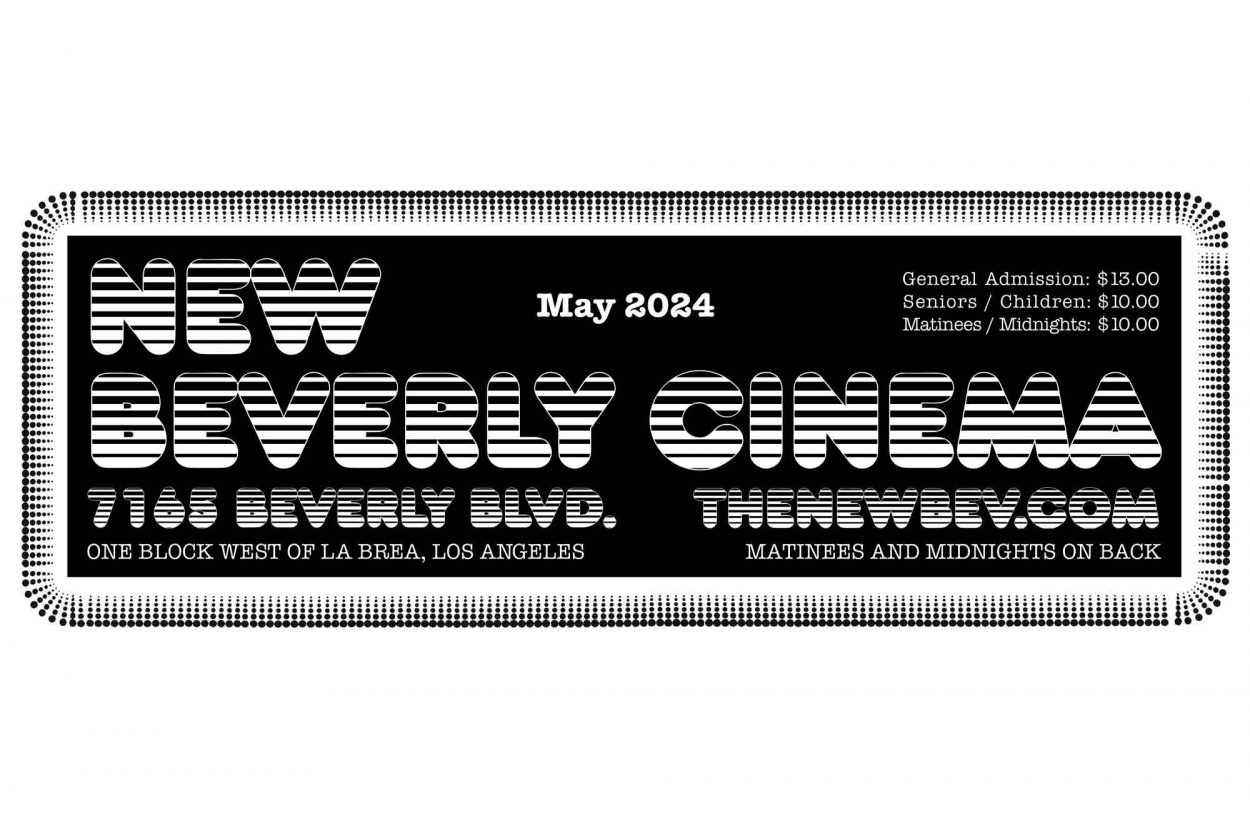“And, worst of all, he was aware of an impulse to tell Bruno everything, the stranger on the train who would listen, commiserate, and forget. The idea of telling Bruno began to comfort him. Bruno was not the ordinary stranger on the train by any means.” – Patricia Highsmith, Strangers on a Train
On September 6, the New Beverly Cinema launches its Afternoon Classics series with the visually explosive thriller Strangers on a Train. One of Hitchcock’s darkest and most sensational works, this film carries with it the distinction of having not one but two women writers central to its production. While author Raymond Chandler has historically received screenplay credits, Hitchcock (it seems) could not find a common working ground with him and fired him. In a series of interviews with Francois Truffaut (later part of the published interview collection “Hitchcock/Truffaut”), the director stated, “Whenever I collaborate with a writer who, like myself, specializes in mystery, thriller, or suspense, things don’t seem to work out too well…[with Chandler] our association didn’t work at all…I ended up with Czenzi Ormonde, a woman writer who was one of Ben Hecht’s assistants.”
Chandler, displeased at being let go from the project, constructed a letter to Hitch dated December 6th, 1950. In this missive, the novelist told the director exactly how he felt: “Regardless of whether or not my name appears on the screen among the credits, I’m not afraid that anybody will think I wrote this stuff. They’ll know damn well I didn’t. I shouldn’t have minded in the least if you had produced a better script—believe me. I shouldn’t. But if you wanted something written in skim milk, why on earth did you bother to come to me in the first place? What a waste of money! What a waste of time! It’s no answer to say that I was well paid. Nobody can be adequately paid for wasting his time.”
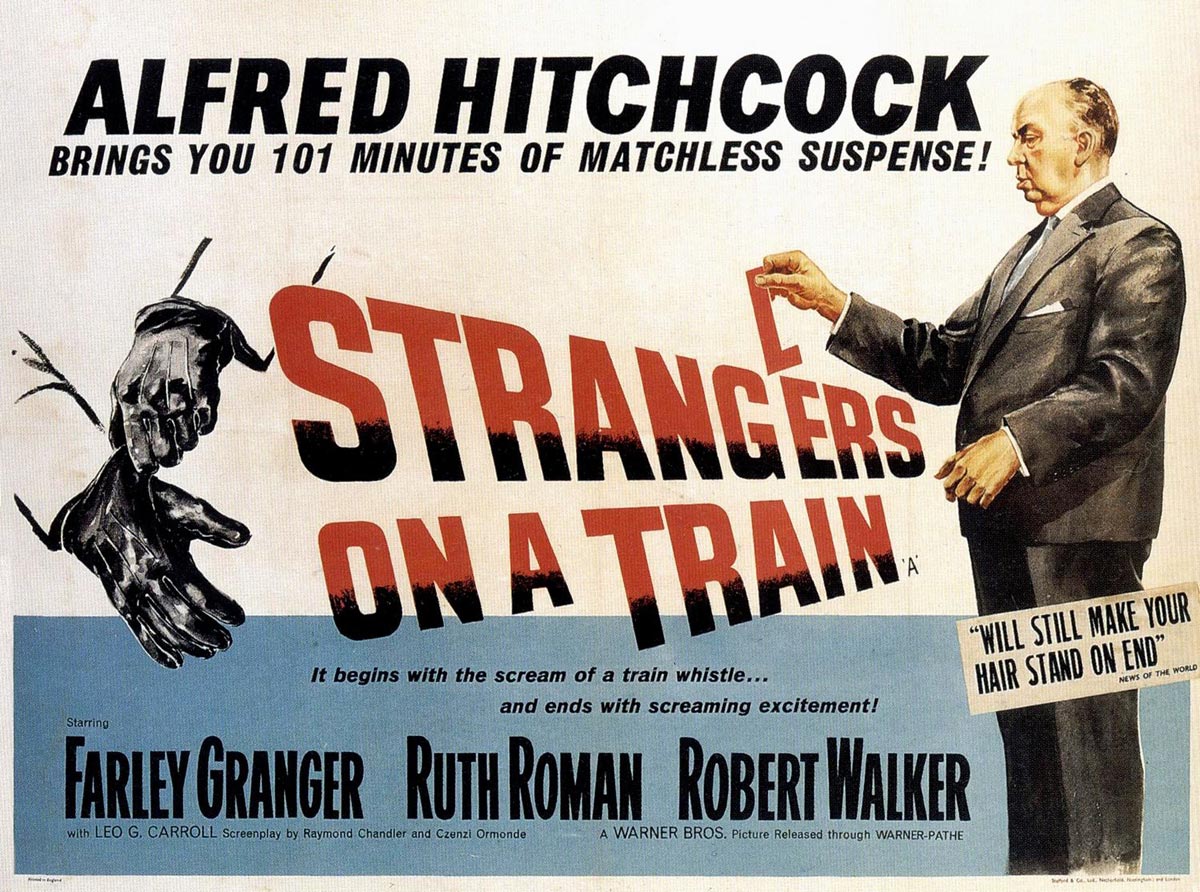
Strangers on a Train was crime fiction writer Patricia Highsmith’s first novel, and Hitch bought the book for $6800 plus a $700 bonus in 1951. Not bad, considering the book had just hit the streets about a year before! Not familiar with Highsmith’s literature? Get thee to a library stat or grab a few titles for yourself at your local bookshop – they’re HIGH-ly re-readable! Many of her other novels and short stories have been adapted for films, so you may already be familiar with those. She created the Mr. Ripley series – so Purple Noon (Rene Clement, 1960), The American Friend (Wim Wenders, 1977) The Talented Mr. Ripley (Anthony Minghella, 1999) – those are all Highsmith. Carol (Todd Haynes, 2015)? Also Highsmith. Prolific and fascinating, Pat Highsmith made her mark. I deeply recommend Kim Morgan’s piece on her here, for a sensitive and in-depth study on this woman.
As some of you may recall from my Hitchcock bio for the New Bev blog, the Master of Suspense had a singular style of filmmaking. He believed that presenting strong visual sequences would evoke greater emotional reactions than what he deemed “useless chatter”; in other words, more pictures, less words. Hitchcock explored male desire in his films, but had a clear fascination with the secretive and the deviant, especially if that bore any connection with sexuality, interpersonal relationships or a person’s criminal behavior. Strangers on a Train was of particular appeal to Hitchcock because it fulfilled every one of these categories flawlessly.
In her novel, Highsmith introduces two men, Guy Haines and Charles Anthony Bruno. Riding the same train, they get drunk together and establish a kind of masculine camaraderie that Bruno deeply enjoys and Guy feels slightly awkward about. But Guy does not entirely reject Bruno’s company. During the journey, Bruno and Guy trade intimate secrets about familial “monkeys on their backs” – for Guy it is his wife Miriam. He is on his way to discuss their divorce proceedings. For Bruno, it’s his father – he stands in the way of his deeply close (and clearly Freudian) relationship with his mother. The unthinkable makes its way to the drinking table: Bruno suggests that they trade murders. Guy would kill Bruno’s Pop; Bruno would do away with Miriam.
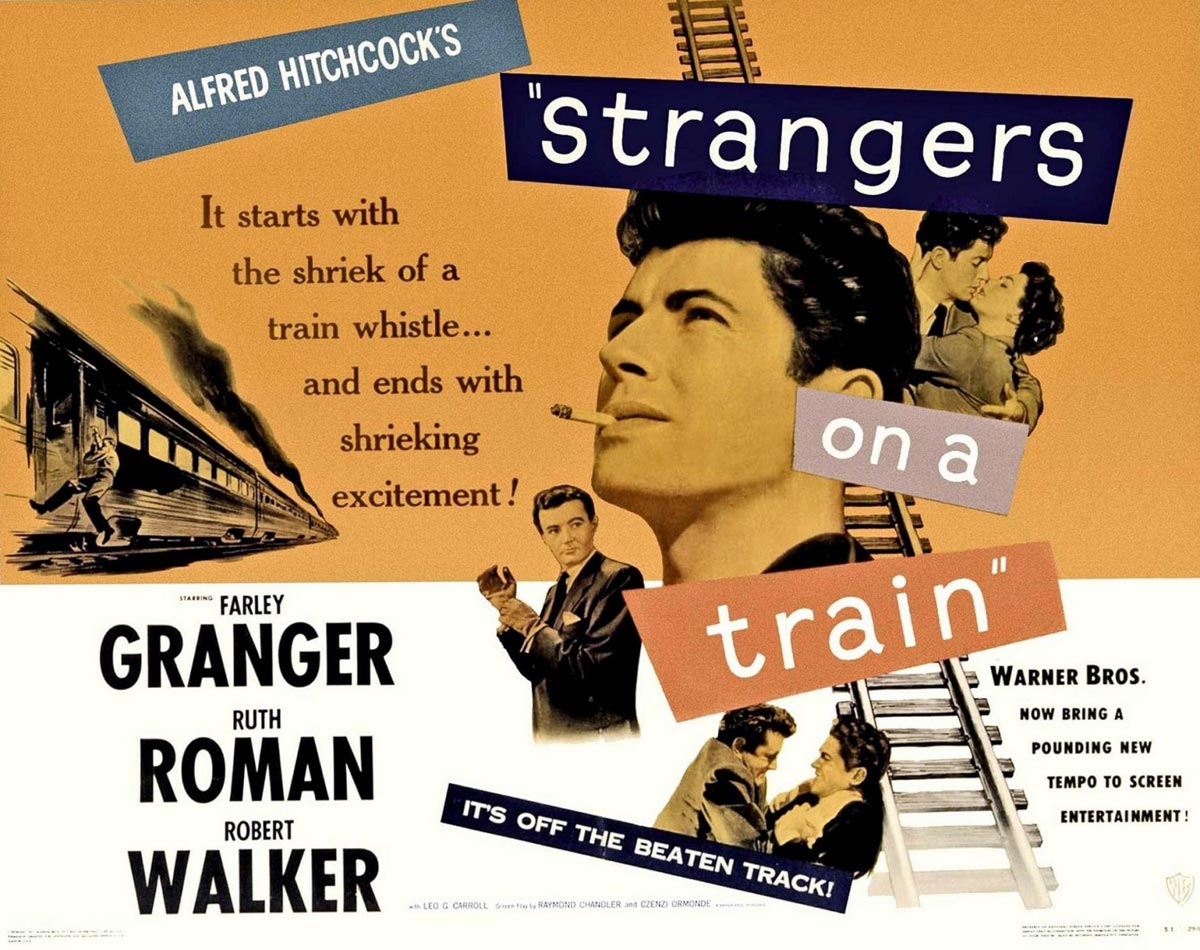
The film and the book diverge on plot in various (fairly critical) places but they are both exquisite. Hitchcock uses Highsmith’s work politely and like a gourmet cook, a dash here, a scoop there, a big slice right here but only just so. Highsmith’s writing is omnipresent in Hitchcock’s film because she writes extremely visually. Her description of men’s’ shoes was utilized by Hitch but with a twist. Shown at the beginning of the picture, Hitch shows the two men bumping into each other by foot. This introduces one of the primary visual themes of Strangers, the crisscross. To expand on this: shots of the train have crisscrossed tracks, the two men are supposed to trade murders (which is a crisscross in itself), there are even shadows distinctly crossing the faces of Guy and/or Bruno at various points in the film. All of these things underscore the pact that they have entered into (willingly or unwillingly, depending on if you ask Bruno or Guy) and the connection between these men; they meet at the center of that x.
Highsmith’s literary brutality and lurid description was made for the screen even if she, herself, disliked and ignored Hollywood. The detail that she pays to killing in the novel is duplicated perfectly by Hitch and the manner in which Highsmith conducts her opera of violence has an elegant grotesquery that lends itself perfectly to Hitchcock’s orchestra. Murder is infinitely alarming in Hitchcock’s work as it is experienced through carefully constructed visuals and diagrams meticulously planned to terrify.
Hitchcock’s consistent employment of reflections is significant, as is his polarized doubling. When Guy (Farley Granger) goes to see Miriam (Kasey Rogers) at the music store, he looks inside but sees only his own reflection. Much later in the film, when Bruno and Guy are standing on either side of a wrought iron fence, they appear as opposing mirror images – one light, one dark. These reflections, this doubling, it continues throughout the film. It appears in the lenses of spectacles, on the Tennis Court (they play doubles), even at the carnival when Miriam takes not one boy but two!
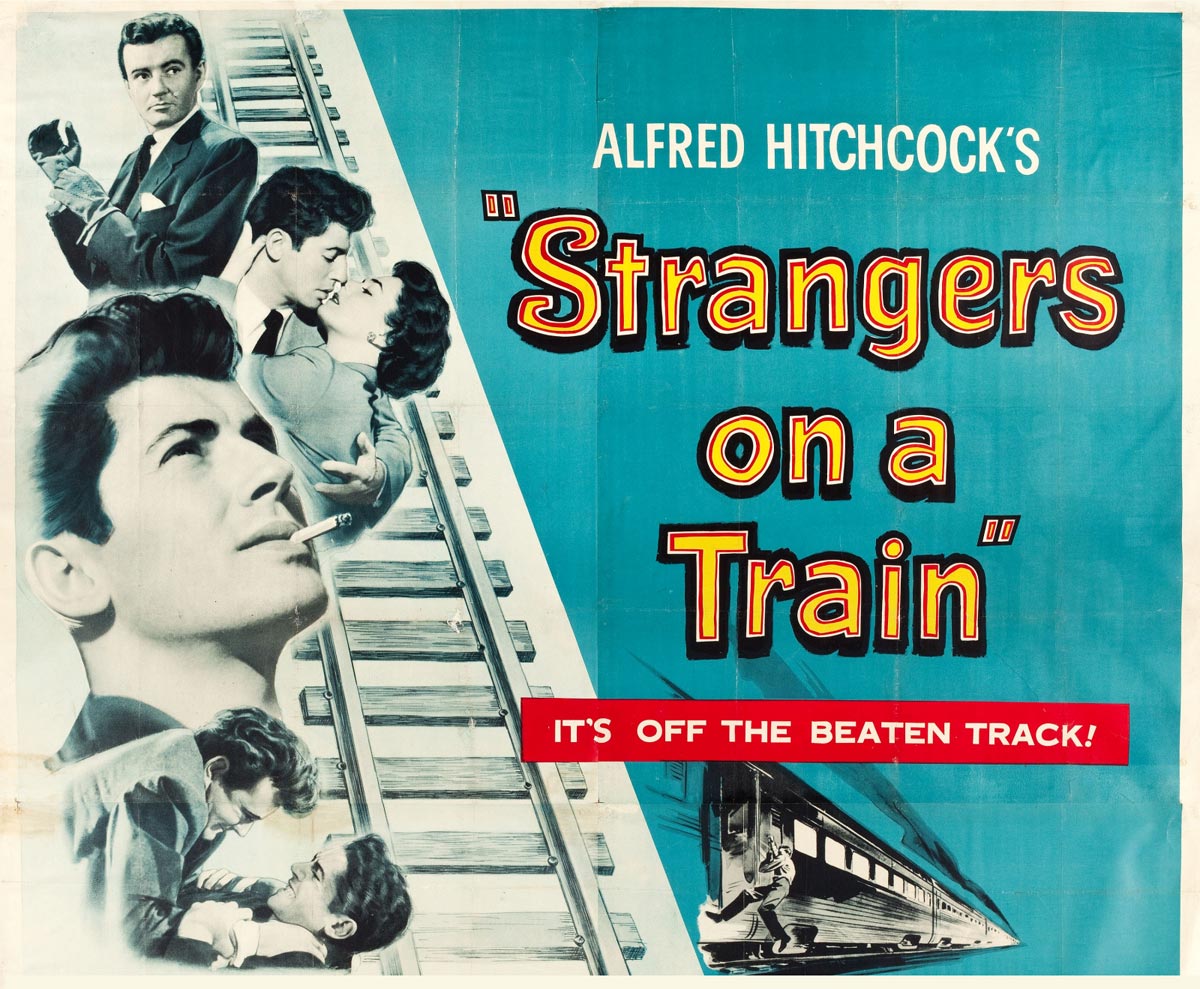
Strangers on a Train features one of the best sociopathic killers on the books, Bruno Antony (name changed from Highsmith’s Charles Anthony Bruno). Of all of Alfred Hitchcock’s killers, none are quite as suave or sexy as Bruno. Robert Walker’s seductive charm and wild sensuality are the standards by which every Polite Killer was set from 1951 onwards. If you enjoyed Hannibal Lecter, his refined, epicurean mode was undoubtedly influenced by the visual explorations of Hitchcock. No one could deny Bruno as played by Robert Walker – that grin, those glittering eyes, that perfect ensemble – he represents danger and eroticism all wrapped in one perfectly manicured package.
Bruno also manages to execute one of the most stunningly terrifying murders ever committed to film. Out of the many bodies that fall throughout Hitchcock’s oeuvre, the murder in Strangers on a Train remains one of the most memorable in its visual horror. Reminiscent of Hitch’s own love for German Expressionism, the influence of filmmakers like Fritz Lang is alive and well in the carnival scene. I won’t spoil the death sequence or the murder. I will allow that to go unsullied as I wish anyone who has not seen it to experience it for the first time. But suffice to say that I have seen every Hitchcock film except two silents and Family Plot (1976), and this is my favorite death scene because it gives even me the chills. It’s powerful as hell.
I would be remiss were I not to discuss Strangers on a Train in terms of its queerness. Borne from a novel written by a lesbian, there is a gay subtext plastered all over the literary source (it almost becomes the text itself). Its filmic sibling naturally reproduces this. Hitch had already worked with themes of gayness and murder in his 1948 film Rope, but Rope was based upon the Leopold and Loeb case. This seemed to be something different entirely. This was Hitchcock exploring new avenues of male desire and shifting the narrative towards what would end up being a more secretive and chaotic coupling.
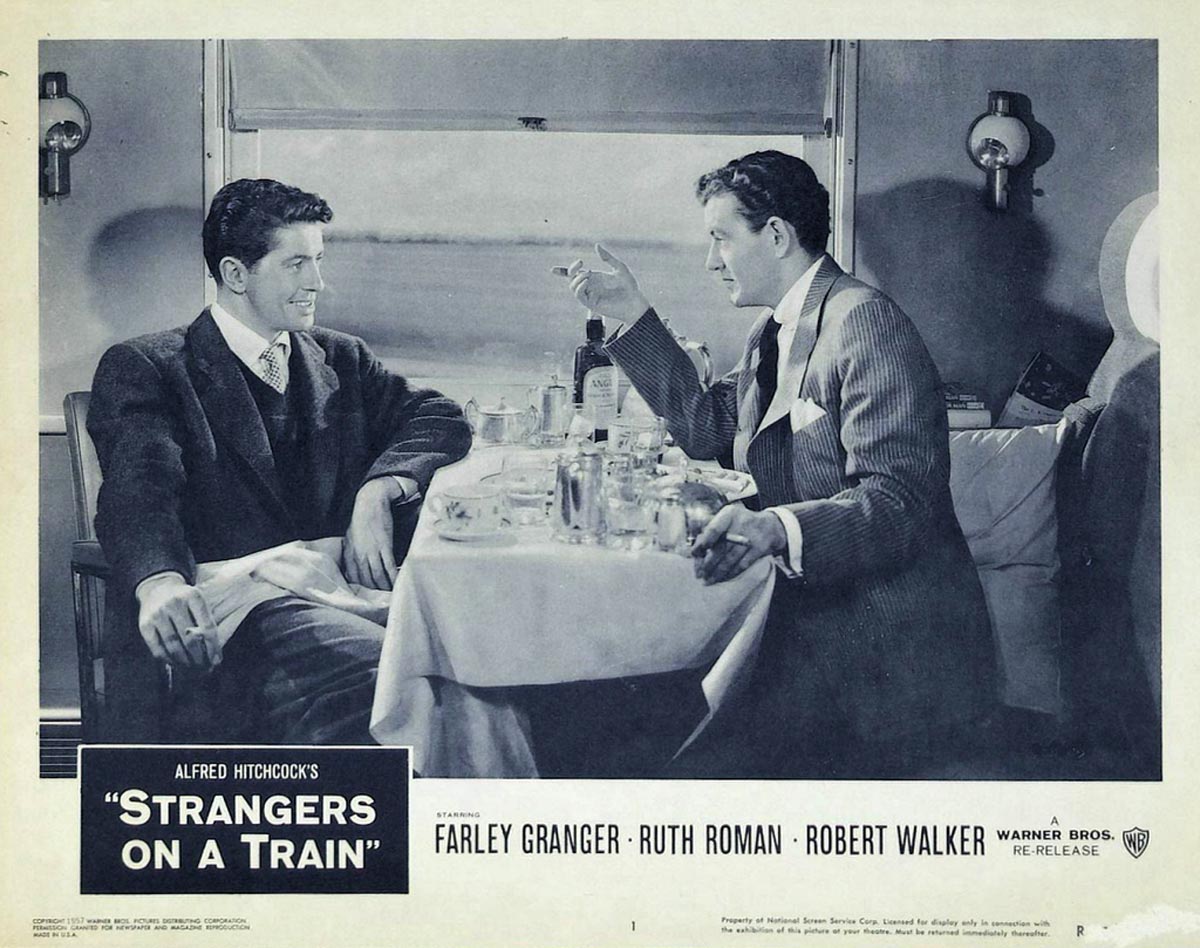
Strangers is different even in terms of its gay representation. Simplistic analysis may boil the film down to: the gay folks are evil, criminal, perverse and the straight folks have been preyed upon and blah blah blah. But there is another reading available. Hitchcock scholar Robin Wood writes that many gay characters in Hitch’s work are personal to the director (and his multi-faceted interest in sexuality) but they are depicted poorly and the audience can readily reject them. Not so with Bruno in Strangers, the most clearly queer character. Wood notes, “Hitchcock clearly has no interest whatever in the characters played by Farley Granger and Ruth Roman, and this lack is inevitably communicated to the audience; their relationship has no emotional weight, their aspirations no moral value. Everything gravitates towards Bruno as the film’s magnetic center of attraction: he becomes not only its most complex and detailed character but also its most vulnerable, in his struggle for control and the escalation of his failure to maintain it.”
And, Freudian bits aside, from the very beginning of Highsmith’s story, we do feel a little bit for this lonely but dynamic character. Stunted, certainly. Could use some anger management classes and some deep therapy, but the Charles Bruno Anthony that Patricia Highsmith created was a complex killer. In need of a friend and just wanting some joy out of life and to experience pleasure. But also to help others do the same- was that so terribly wrong??
In examining the Hitchcock landscape, the erasure of the good/evil binary in Strangers makes sense. Bruno’s outlook on the world (while seeming to be more “queer” or “deviant”) is more realistic and thus attractive than anyone else’s. Is he really the hero of the story? Has it been flipped? When we look towards this narrative, are the “good” really that “good”? In Strangers, it’s a big joke- the “good guys” are celebrities and politicians. Guy is a famous tennis player who gets asked for his autograph, and he’s trying to marry Anne Morton (Ruth Roman) whose family is a bunch of big shots in Washington, DC. We are left wondering whose side is really worth being on and what we might have chosen in the end ourselves. Strangers on the Train is a brilliant cultural work. Both the film and the book are worth pursuing. They are different and similar in just the right ways and Hitch did High justice.

